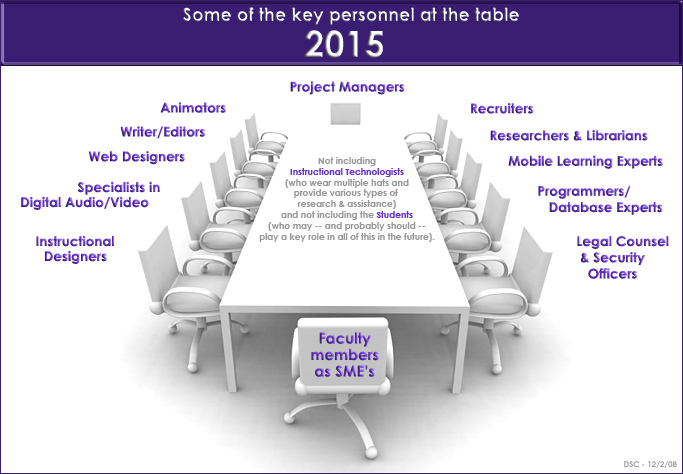Evaluating Part-Time Faculty — from Academic Impressions by Daniel Fusch
This fall, the US Department of Education is expected to release a report showing a further drop in the percentage of US faculty who are tenured or tenure-track (which as of 2007 had already dropped to 31%, down from 57% in 1975). This comes on the heels of a recent study published in the journal Educational Policy that showed lower persistence rates for freshmen who have many of their courses taught by adjuncts, prompting fresh debate over what the increased use of contingent faculty may mean for the quality of education.
From DSC:
I don’t mean to be critical or find fault here…but I do wonder how many resources are put into full-time faculty’s training and development in terms of helping them learn how to TEACH (vs. doing research, publishing their findings, etc.). Teaching is tough and is both a science and an art. Few can be good at everything.
Also, I think there is an emphasis on teaching at some institutions, but there may be more of an emphasis on publishing and doing research at other institutions.
For example, I went to Northwestern University in Evanston, IL. Currently, NU charges about $55,000 a year to go there. Does the student get top notch TEACHING? In many cases, I doubt it. The students may get subject matter experts (SME’s) who know their subject matter like the back of their hand or they make be taking a course from someone who has carved out a name for himself/herself in a particular discipline…but that doesn’t mean they know how to teach that material. Also, it doesn’t mean that many students will ever get to take a class from these folks, as they may be getting a grad student teaching some of their core courses…I know I did.
Also, this is all the more reason that teams of specialists will be/should be used to create and deliver content. You want the best SME’s you can get…but you need to back them up with the resources to create the best all-around product. You need the skillsets found in instructional designers, programmers, web designers, interaction designers, graphic designers, legal experts, etc. — the best that you can afford to create engaging, interactive, multimedia-based, personalized content.
You can bet that the “Forthcoming Walmart of Education” will get this right! And when they do, watch out. They will leave many institutions in their dust.









